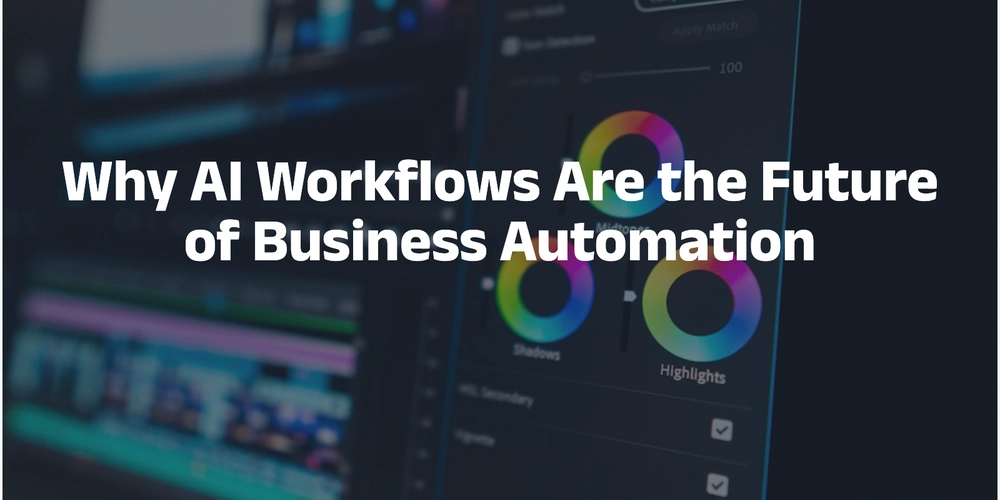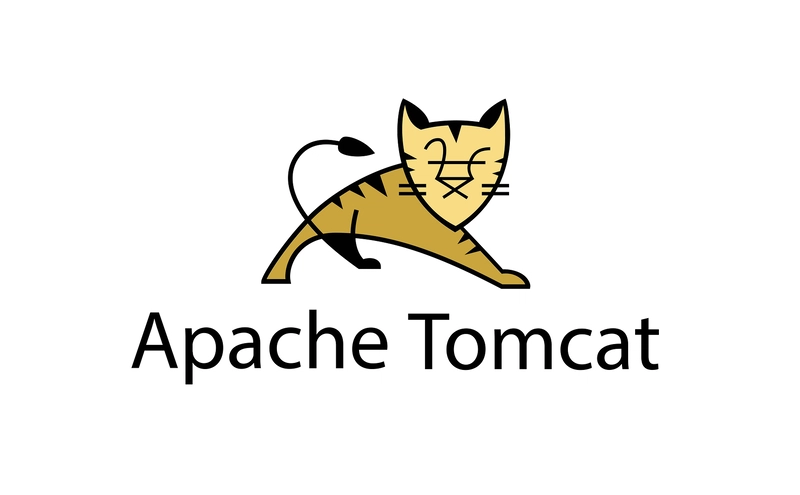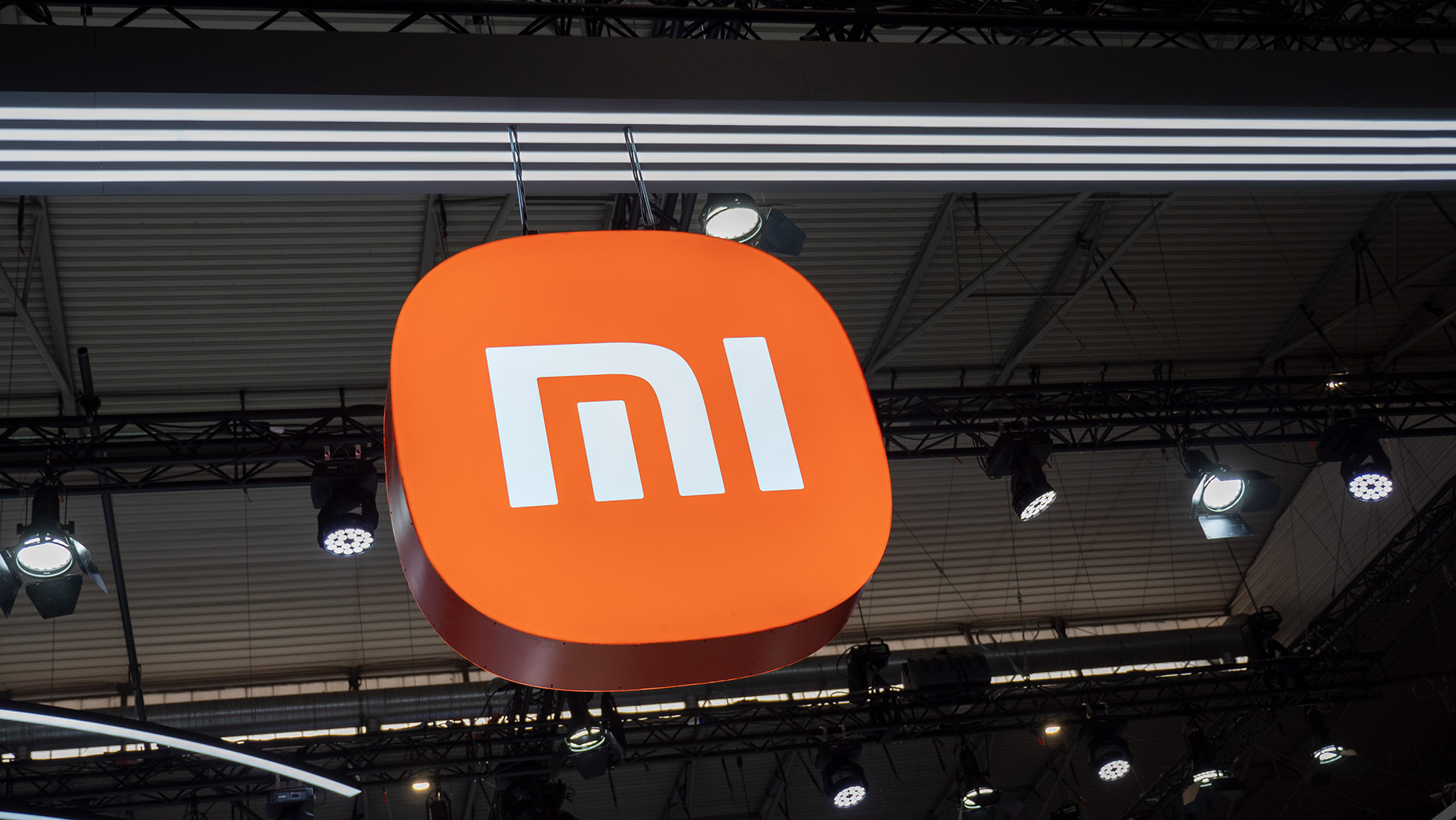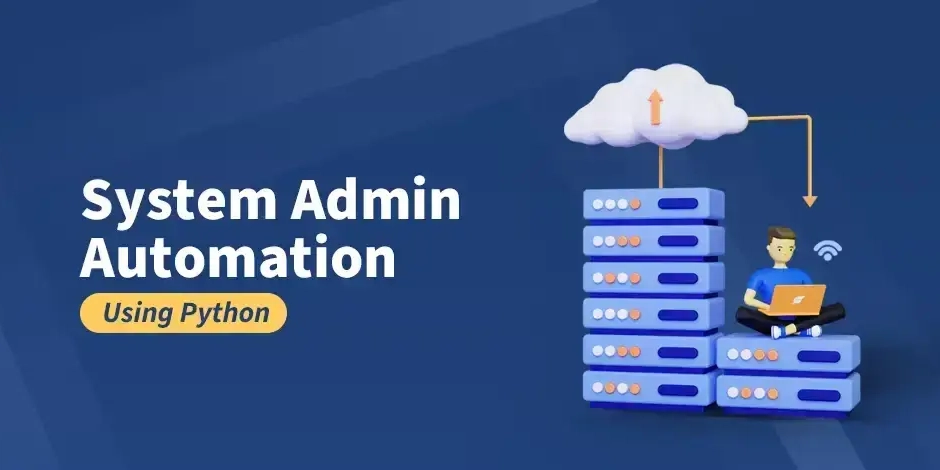Why AI Workflows Are the Future of Business Automation
Automation Isn’t Enough Anymore For decades, business automation has been a reliable tool for improving efficiency, moving emails, copying data, and sending alerts. But today’s business environment is faster, more data-driven, and increasingly unpredictable. Traditional rule-based automation is struggling to keep up. The next phase of automation is here: AI workflows. Unlike traditional systems, AI business automation understands context, adapts to new situations, and learns over time. In this blog, we explore why AI workflows are the future of business automation, how they differ from traditional automation, and how businesses can start leveraging them today. The Limits of Traditional Automation Traditional automation tools like Zapier, Make, and basic RPA (Robotic Process Automation) platforms helped companies automate repetitive tasks. These systems operate on "if-this-then-that" logic. However, they have significant limitations: Lack of Adaptability: Even small deviations, like a changed email format, can cause failures. No Contextual Understanding: They cannot interpret unstructured data, sentiment, or nuance. Constant Maintenance: Business process changes require frequent manual updates to automation rules. As business operations grow more complex, relying solely on traditional business automation software becomes less sustainable. What Are AI Workflows? An AI workflow integrates artificial intelligence into automation processes, allowing systems to interpret, decide, and act rather than simply following a rule. Rather than responding only to predefined triggers, AI workflows: Understand intent and meaning, even when data formats vary. Adapt to dynamic and changing inputs. Predict outcomes and recommend or initiate the best actions. In simple terms, traditional automation follows instructions, while AI workflows think and make decisions. How AI Adds Contextual Intelligence The most significant advantage AI brings to business automation is contextual intelligence. AI enables automation systems to: Understand human language through Natural Language Processing (NLP). Identify patterns across structured and unstructured data. Dynamically make decisions based on real-time analysis. Improve over time using machine learning techniques. Instead of blindly executing tasks, AI workflows assess context, infer meaning, and choose the appropriate actions. Industries Already Using AI Workflows AI-driven automation is already transforming various industries: Customer Support: AI chatbots handle complex customer queries and escalate issues intelligently based on sentiment analysis. Marketing: AI personalizes campaigns, generates content drafts, and predicts purchasing behaviour from customer data. Human Resources: AI screens resumes, matches candidates to roles based on skills and experience, and automates parts of the onboarding process. D2C Brands: AI analyzes customer reviews for product feedback and automates customer engagement through intelligent workflows. Finance and Legal: AI reviews contracts, flags anomalies, and generates compliance reports more efficiently than manual processes. These examples show that the benefits of AI workflows are real and measurable across multiple sectors. How Workflow AI Reduces Time and Costs Here are some examples of how Svalync is automating complex workflows using AI significantly reducing time and operational effort: Use Case Time with Current Methods Time with Workflow AI Video Dubbing 8+ hours for a 30-minute video 20 minutes for a 30-minute video Marksheet Vetting 583+ hours for 1000 students 8 hours for 1000 students Web Scraping 3+ days (including coding time) 3 minutes (even from unstructured websites) Invoice Data Extraction 217+ hours per 1000 invoices 1 hour 30 minutes for 1000 invoices This is not just about marginal efficiency gains. Workflow AI is unlocking order-of-magnitude improvements in speed, consistency, and scalability across key operational areas. Svalync, which embraces AI workflows is not only saving time but also reallocating resources toward higher-value, strategic activities. Human-in-the-Loop vs. Fully Autonomous AI AI workflows are designed to enhance human productivity, not eliminate it. There are two models for the future of work: Human-in-the-Loop AI: AI handles the heavy lifting, such as data extraction, categorization, and preliminary analysis, while humans oversee, validate, and handle exceptions. Fully Autonomous AI Workflows: End-to-end processes, such as customer support ticket resolution or lead qualification, are handled by AI without human intervention, with humans focusing on strategy and oversight. Businesses will likely operate a hybrid model, using a combination of both depending on the complexity and risk associated with specific tasks.

Automation Isn’t Enough Anymore
For decades, business automation has been a reliable tool for improving efficiency, moving emails, copying data, and sending alerts.
But today’s business environment is faster, more data-driven, and increasingly unpredictable. Traditional rule-based automation is struggling to keep up.
The next phase of automation is here: AI workflows. Unlike traditional systems, AI business automation understands context, adapts to new situations, and learns over time.
In this blog, we explore why AI workflows are the future of business automation, how they differ from traditional automation, and how businesses can start leveraging them today.
The Limits of Traditional Automation
Traditional automation tools like Zapier, Make, and basic RPA (Robotic Process Automation) platforms helped companies automate repetitive tasks. These systems operate on "if-this-then-that" logic.
However, they have significant limitations:
- Lack of Adaptability: Even small deviations, like a changed email format, can cause failures.
- No Contextual Understanding: They cannot interpret unstructured data, sentiment, or nuance.
- Constant Maintenance: Business process changes require frequent manual updates to automation rules.
As business operations grow more complex, relying solely on traditional business automation software becomes less sustainable.
What Are AI Workflows?
An AI workflow integrates artificial intelligence into automation processes, allowing systems to interpret, decide, and act rather than simply following a rule.
Rather than responding only to predefined triggers, AI workflows:
- Understand intent and meaning, even when data formats vary.
- Adapt to dynamic and changing inputs.
- Predict outcomes and recommend or initiate the best actions.
In simple terms, traditional automation follows instructions, while AI workflows think and make decisions.
How AI Adds Contextual Intelligence
The most significant advantage AI brings to business automation is contextual intelligence.
AI enables automation systems to:
- Understand human language through Natural Language Processing (NLP).
- Identify patterns across structured and unstructured data.
- Dynamically make decisions based on real-time analysis.
- Improve over time using machine learning techniques.
Instead of blindly executing tasks, AI workflows assess context, infer meaning, and choose the appropriate actions.
Industries Already Using AI Workflows
AI-driven automation is already transforming various industries:
Customer Support:
AI chatbots handle complex customer queries and escalate issues intelligently based on sentiment analysis.
Marketing:
AI personalizes campaigns, generates content drafts, and predicts purchasing behaviour from customer data.
Human Resources:
AI screens resumes, matches candidates to roles based on skills and experience, and automates parts of the onboarding process.
D2C Brands:
AI analyzes customer reviews for product feedback and automates customer engagement through intelligent workflows.
Finance and Legal:
AI reviews contracts, flags anomalies, and generates compliance reports more efficiently than manual processes.
These examples show that the benefits of AI workflows are real and measurable across multiple sectors.
How Workflow AI Reduces Time and Costs
Here are some examples of how Svalync is automating complex workflows using AI significantly reducing time and operational effort:
| Use Case | Time with Current Methods | Time with Workflow AI |
|---|---|---|
| Video Dubbing | 8+ hours for a 30-minute video | 20 minutes for a 30-minute video |
| Marksheet Vetting | 583+ hours for 1000 students | 8 hours for 1000 students |
| Web Scraping | 3+ days (including coding time) | 3 minutes (even from unstructured websites) |
| Invoice Data Extraction | 217+ hours per 1000 invoices | 1 hour 30 minutes for 1000 invoices |
This is not just about marginal efficiency gains.
Workflow AI is unlocking order-of-magnitude improvements in speed, consistency, and scalability across key operational areas.
Svalync, which embraces AI workflows is not only saving time but also reallocating resources toward higher-value, strategic activities.
Human-in-the-Loop vs. Fully Autonomous AI
AI workflows are designed to enhance human productivity, not eliminate it.
There are two models for the future of work:
Human-in-the-Loop AI:
AI handles the heavy lifting, such as data extraction, categorization, and preliminary analysis, while humans oversee, validate, and handle exceptions.
Fully Autonomous AI Workflows:
End-to-end processes, such as customer support ticket resolution or lead qualification, are handled by AI without human intervention, with humans focusing on strategy and oversight.
Businesses will likely operate a hybrid model, using a combination of both depending on the complexity and risk associated with specific tasks.
Getting Started: How Non-Developers Can Use AI Workflows
You do not need an engineering team to adopt AI business automation today.
Modern business automation software platforms like Svalync, Relevance AI, and others make it accessible to non-developers through visual interfaces and no-code tools.
Here is a simple roadmap to get started:
- Identify repetitive, time-consuming tasks that involve structured or unstructured data.
- Choose a specific use case to pilot, such as categorizing customer inquiries.
- Use available templates to build your first workflow quickly.
- Start with small automations, track results, and expand gradually based on success.
- Measure success by tracking saved time, improved accuracy, or enhanced customer satisfaction.
With the right tools, even small businesses can experience the benefits of AI workflows without technical complexity.
AI Workflow Examples Driving Business Impact
Some practical examples of AI workflows making a real difference include:
Sales Automation:
AI reads inbound emails, extracts key information, prioritizes leads, and routes them to the sales team.
E-commerce Recovery:
AI identifies abandoned shopping carts and triggers personalized follow-up emails to recover lost revenue.
Content Marketing:
AI summarizes industry news and generates weekly newsletters or social media posts automatically.
Customer Support Automation:
AI resolves a significant portion of incoming queries by understanding customer intent and fetching relevant answers.
These use cases illustrate how AI business automation can go far beyond static workflows to deliver smarter, faster results.
AI Workflows Are Redefining Business Automation
Business automation has reached a turning point.
Rigid, static systems are no longer enough to handle the complexity and speed of modern operations.
AI workflows offer a smarter alternative. They understand, adapt, and improve, allowing businesses to stay competitive in an unpredictable market.
Whether you are a startup founder, a growing team, or an enterprise leader, adopting AI workflows is no longer optional. It is essential to building resilient, scalable, and intelligent operations.
The future of business automation belongs to AI. And it is already here.








![Epic Games: Fortnite is offline for Apple devices worldwide after app store rejection [updated]](https://helios-i.mashable.com/imagery/articles/00T6DmFkLaAeJiMZlCJ7eUs/hero-image.fill.size_1200x675.v1747407583.jpg)































































































































































![[The AI Show Episode 146]: Rise of “AI-First” Companies, AI Job Disruption, GPT-4o Update Gets Rolled Back, How Big Consulting Firms Use AI, and Meta AI App](https://www.marketingaiinstitute.com/hubfs/ep%20146%20cover.png)


















































































































































































































































.png?width=1920&height=1920&fit=bounds&quality=70&format=jpg&auto=webp#)























![[Virtual Event] Strategic Security for the Modern Enterprise](https://eu-images.contentstack.com/v3/assets/blt6d90778a997de1cd/blt55e4e7e277520090/653a745a0e92cc040a3e9d7e/Dark_Reading_Logo_VirtualEvent_4C.png?width=1280&auto=webp&quality=80&disable=upscale#)











































































-xl-(1)-xl-xl.jpg)










![How to upgrade the M4 Mac mini SSD and save hundreds [Video]](https://i0.wp.com/9to5mac.com/wp-content/uploads/sites/6/2025/05/M4-Mac-mini-SSD-Upgrade-Tutorial-2TB.jpg?resize=1200%2C628&quality=82&strip=all&ssl=1)
![‘Apple in China’ book argues that the iPhone could be killed overnight [Updated]](https://i0.wp.com/9to5mac.com/wp-content/uploads/sites/6/2025/05/Apple-in-China-review.jpg?resize=1200%2C628&quality=82&strip=all&ssl=1)




![What’s new in Android’s May 2025 Google System Updates [U: 5/16]](https://i0.wp.com/9to5google.com/wp-content/uploads/sites/4/2025/01/google-play-services-1.jpg?resize=1200%2C628&quality=82&strip=all&ssl=1)












![iPhone 17 Air Could Get a Boost From TDK's New Silicon Battery Tech [Report]](https://www.iclarified.com/images/news/97344/97344/97344-640.jpg)
![Vision Pro Owners Say They Regret $3,500 Purchase [WSJ]](https://www.iclarified.com/images/news/97347/97347/97347-640.jpg)
![Apple Showcases 'Magnifier on Mac' and 'Music Haptics' Accessibility Features [Video]](https://www.iclarified.com/images/news/97343/97343/97343-640.jpg)
![Sony WH-1000XM6 Unveiled With Smarter Noise Canceling and Studio-Tuned Sound [Video]](https://www.iclarified.com/images/news/97341/97341/97341-640.jpg)










































![Apple Stops Signing iPadOS 17.7.7 After Reports of App Login Issues [Updated]](https://images.macrumors.com/t/DoYicdwGvOHw-VKkuNvoxYs3pfo=/1920x/article-new/2023/06/ipados-17.jpg)




























